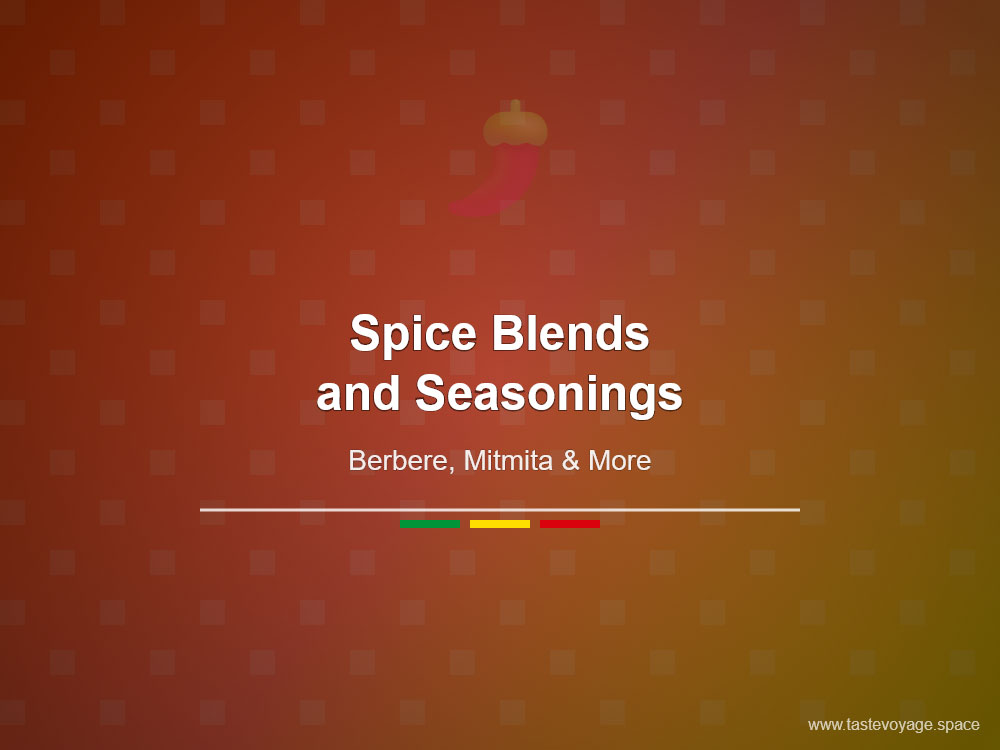Mastering Authentic Ethiopian Spice Blending Techniques
Travel the World Through Food >> Ethiopian Cuisine>>Spice Blends and Seasonings>> Mastering Authentic Ethiopian Spice Blending Techniques
Mastering Authentic Ethiopian Spice Blending Techniques
Discovering the Essence of Ethiopian Cuisine: Authentic Spice Combining Techniques
Ethiopian Cuisine is renowned for its vibrant flavors and rich culinary traditions. Central to this culinary heritage is the art of spice combining, a skill passed down through generations. The technique of authentic Ethiopian spice combining is more than just a cooking process — it is a reflection of cultural identity, community, and history. Exploring this method offers a window into Ethiopia’s unique food culture and its deep-rooted appreciation for flavor and tradition.
The Cultural Significance of Spices in Ethiopian Food
Spices are the soul of Ethiopian dishes. They are used not only to enhance taste but also to convey cultural stories and values. In Ethiopia, spice blending is considered a sacred craft, often involving specific recipes and methods that have been preserved over centuries. These Spice Blends, known as “Berbere” and “Mitmita,” are essential to creating the characteristic taste of many Ethiopian dishes.
Each spice blend is crafted with intention, balancing heat, aroma, and depth. This process is often a communal activity, bringing families and communities together. It embodies a sense of respect for tradition and a shared identity that is expressed through food. Ethiopian spices symbolize more than flavor; they represent history, resilience, and the artistry of culinary expression.
The Culinary Importance of Spice Combining Techniques
Mastering the art of spice combining is key to authentic Ethiopian cooking. The techniques involve selecting the right spices, roasting them to bring out their full aroma, and grinding them to achieve the perfect consistency. This meticulous process results in a complex flavor profile that is both bold and nuanced.
The unique methods used in Ethiopian spice combining also enhance the versatility of dishes. The spice blends serve as a foundation for a variety of traditional foods, including injera (a type of sourdough flatbread), wat (stew), and tibs (sautéed meat). The careful balance of spices elevates these dishes, making them unforgettable.
Moreover, the process of creating spice blends encourages sustainability and respect for natural ingredients. Spices are often sourced locally and prepared in ways that honor their unique qualities. This connection to local resources amplifies the authenticity and cultural significance of the dishes.
Preserving a Culinary Heritage
The art of authentic Ethiopian spice combining is a living tradition. It connects past and present, ensuring that culinary practices remain vibrant and relevant. Food artisans and cooks dedicate themselves to preserving these techniques, passing their knowledge to future generations.
Celebrating Ethiopian spice blending invites us to appreciate a culture where food is a form of storytelling. It reminds us that culinary traditions are vital to cultural identity and community cohesion. By exploring and respecting these techniques, we honor the rich legacy embedded in every dish.
Embracing Ethiopian Culinary Richness
In conclusion, the technique of authentic Ethiopian spice combining holds a special place in the heart of Ethiopia’s culinary landscape. It embodies tradition, artistry, and cultural pride. This method results in dishes that are not only flavorful but also meaningful, serving as a testament to Ethiopia’s rich culinary heritage.
Whether you are a seasoned foodie or a curious explorer of world cuisines, understanding the significance of spice combining in Ethiopian cooking deepens your appreciation for this extraordinary cuisine. It invites us all to savor the stories and traditions that make Ethiopian food uniquely captivating and profoundly enriching.
